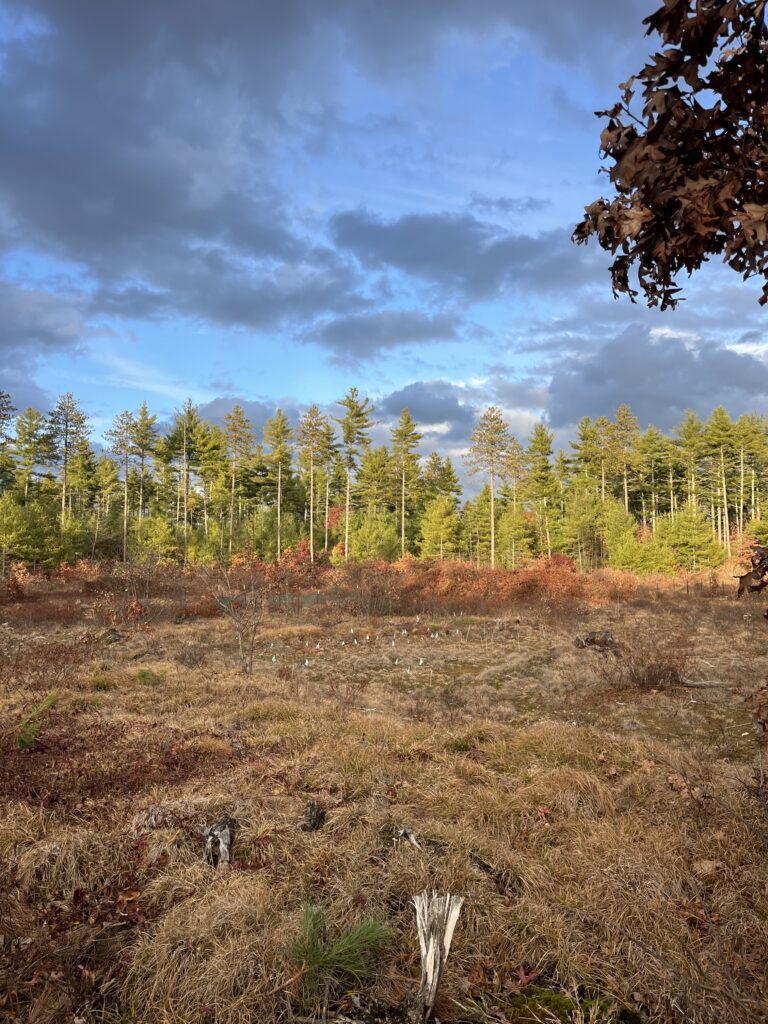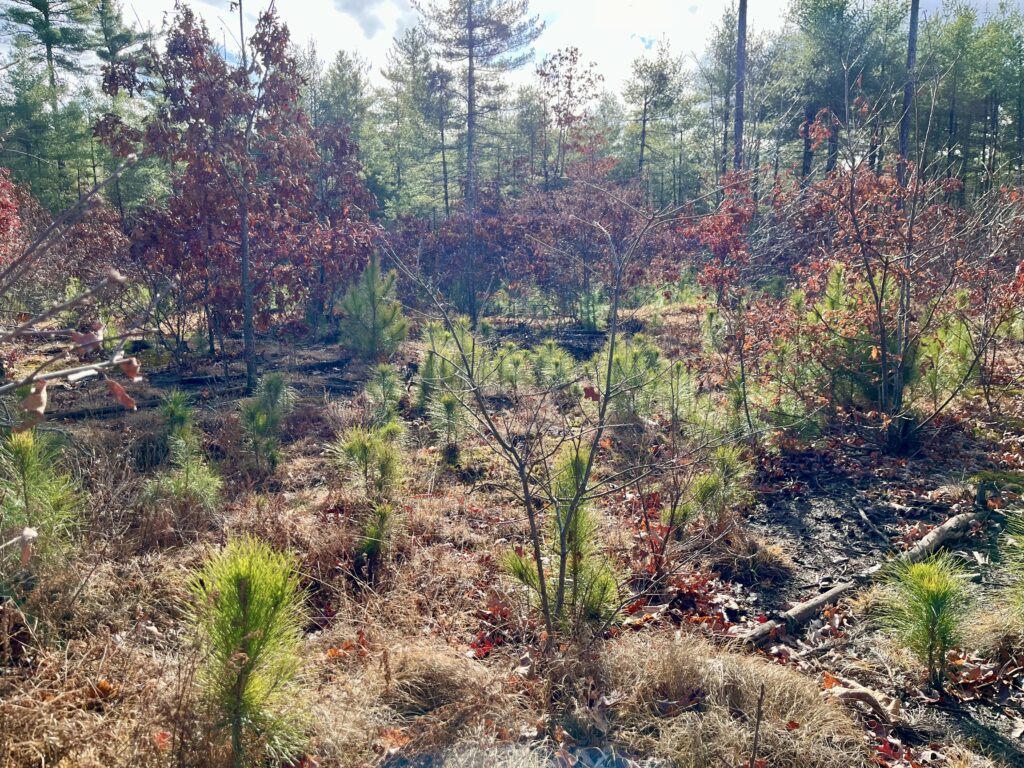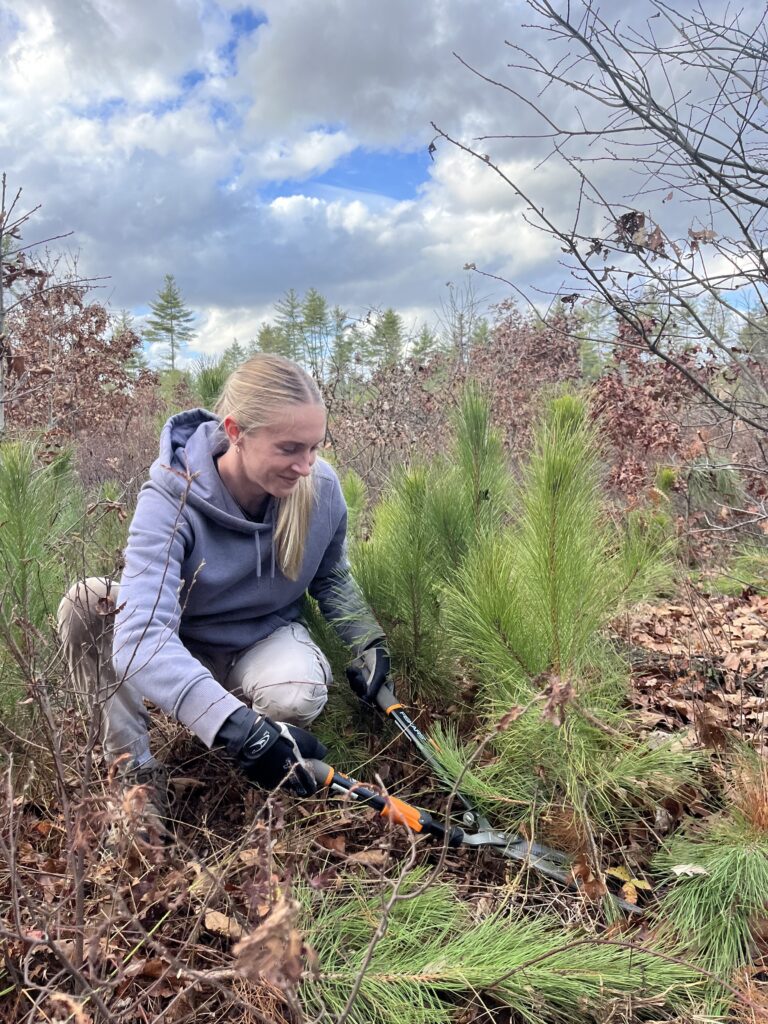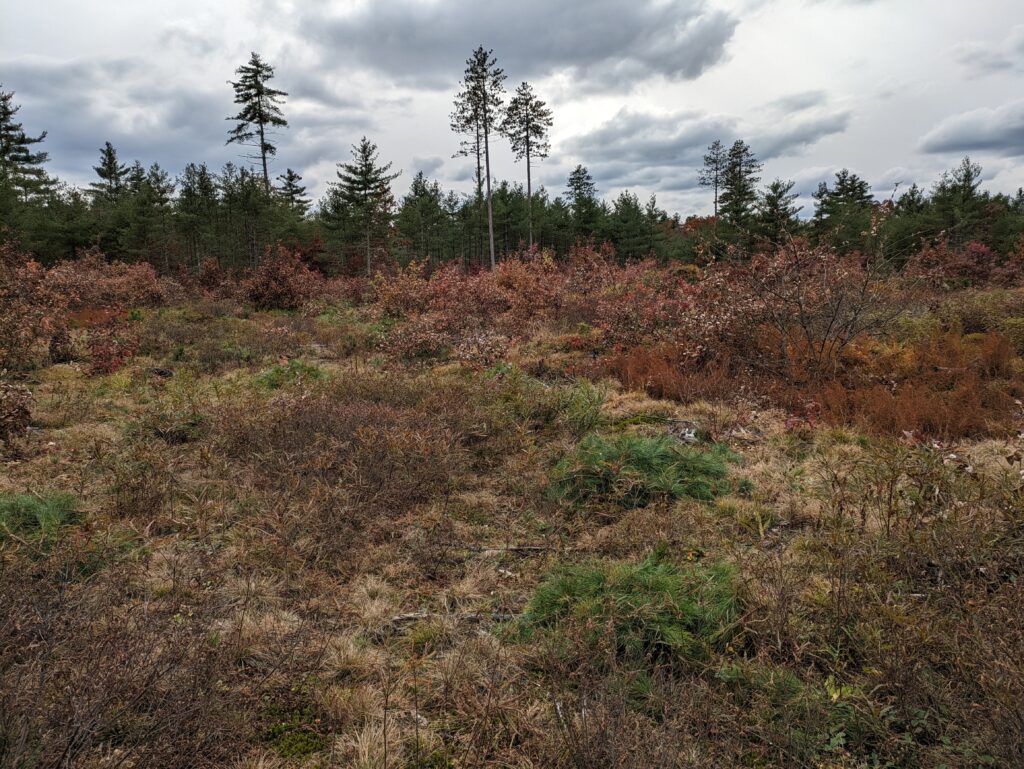
When you think of a thriving natural landscape, what comes to mind? How does it compare to the protected open space in your own town? You may picture a mature forest with towering trees and a full canopy as far as you can see. In New England, this image is iconic. Most protected open spaces in New England are forested and portray a collective vision of pristine nature. But what about scrub, brush, and open grasslands? These often-overlooked habitats are disappearing across Massachusetts, not just from urbanization or agriculture, but, surprisingly, due to forest regeneration.
While it may seem counterintuitive, forest regeneration can threaten biodiversity by replacing open habitats like grasslands, shrublands, and young forests, collectively referred to as early successional habitat. Although the land remains undeveloped, its composition changes, and so do the plant, insect and wildlife species that can live there. The low, thick vegetation and diverse plant life that characterizes early successional habitat are crucial for many species for foraging, nesting, and raising young.

Early successional habitat is established as natural disturbances or human activity create opportunities for plants and wildlife to thrive in novel conditions. Historically, natural disturbances such as wildfire and floods, and human activity such as indigenous land management, logging, and agriculture established a mosaic of habitat types. In the last few hundred years, the human relationship with the land has changed. Many farms were abandoned, and indigenous practices and natural disturbances were suppressed.

In New England, most land is privately owned, and undeveloped space is often interspersed among human assets such as homes, businesses, and roads, making holistic land management difficult, and further incentivizing risk averse initiatives such as wildfire suppression. Gradually, forests took over, and today, over 80% of New England is mature or second growth forest, which is a peak unseen in the last few hundred years! Mature forests are valuable ecosystems, however support just a subsect of species native to the landscape. Often, insects and wildlife depend on a diverse mosaic of habitats for various stages of life. Grassland birds, pollinators, and charismatic wildlife like the New England cottontail and Eastern box turtle disappear as available habitat becomes increasingly uniform, and dense tree canopies block sunlight and reduce diversity and structure of plant composition.

Zoo New England addressed this concern by partnering with the town of Dunstable to establish a small conservation clearcut. The clearcut mimics natural disturbance, and the site was chosen as a prime location to support the habitat needs of eastern box turtles– a regionally rare species reliant on a mosaic of habitats.
Maintaining this plot as an early successional habitat requires hard work and dedication, and our staff certainly has the enthusiasm! This fall, our team removed young pines and brush, which will help this plot remain open for years to come. Without consistent management, young trees and brush would quickly reclaim the area. Removing the young pines creates opportunities for herbaceous plants in the seedbank to flourish, supporting various rare plants, and providing wildlife with herbaceous cover and foraging opportunities. Along with removing woody species, this year we also planted rare natives such as New England blazing star, sundial lupine, and fern-leaved false foxglove, which pollinators and insects that utilize these host plants depend on. It was amazing to see what we could accomplish, and it is a treat knowing the diverse plants and wildlife that may utilize the plot come spring.


